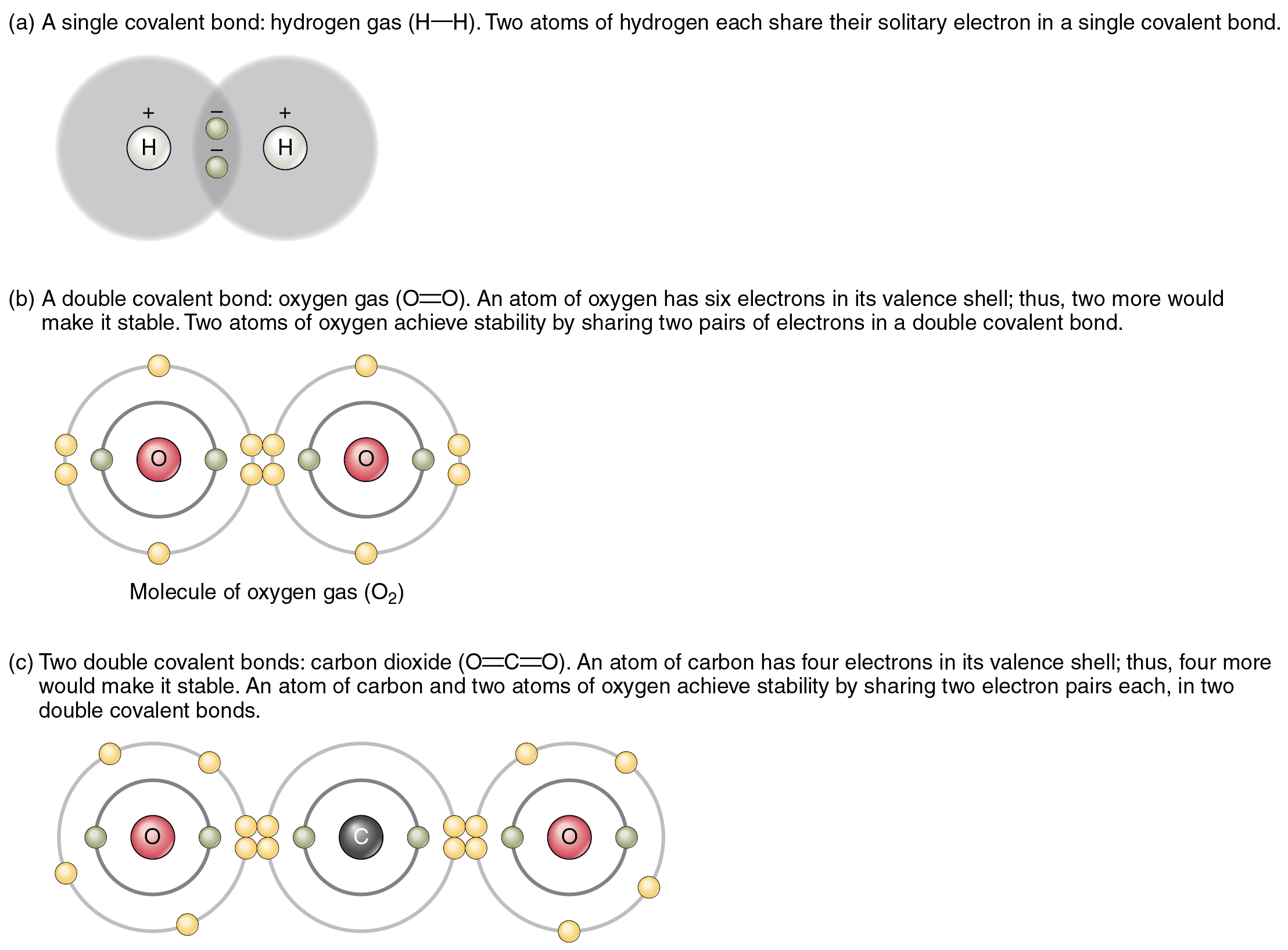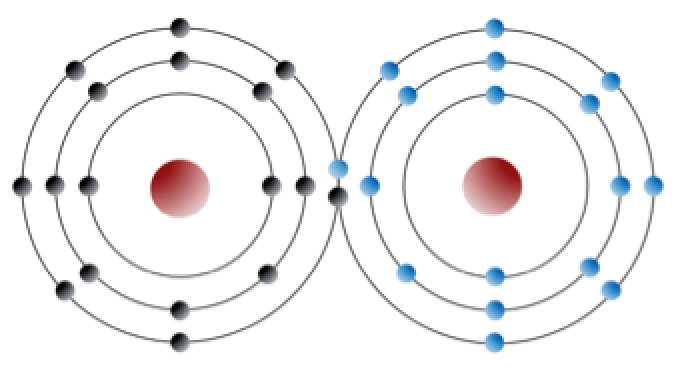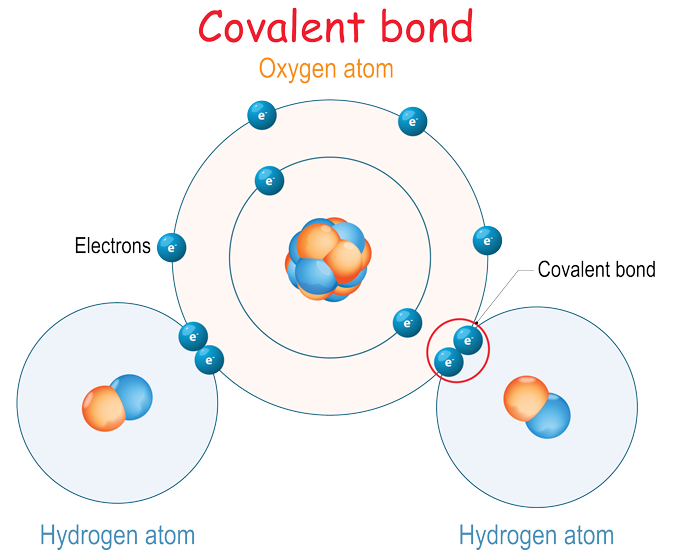Describe Two Ways That Atoms Bond With Other Atoms
Valence electrons the number of valence electrons will determine how many electrons are associated with the bond. So lets say weve got a sodium atom that has an extra electron.

Sodium Chloride Cartoon So Cute I M Glad To Have This When Teaching Physical Science Chemistry Classroom Teaching Chemistry Science Cartoons
Weve also got a fluorine atom that is looking for one.

. Ways atoms can combine to form compounds arecovalent bond and ionic bondCovalent bond. A substance composed of atoms held together by covalent bonds. Single carbon-carbon bond link all the carbon atoms.
When an atoms outer electron shell is completely full it is stable and will not react with other atoms. Electrical attraction in which atoms are held together by their mutual attraction for shared electrons. If two atoms share electrons in order to have a completely filled outer shell then the bond formed between the two atoms is called covalent bond.
In one way atoms are put together to form things called molecules. This creates a covalent bond. There are several ways that atoms can combine.
Atoms can join together by forming a chemical bond A very strong attraction between two atoms which is a very strong attraction between two atomsChemical bonds are formed when electrons in different atoms interact with each other to make an arrangement that is more stable than when the atoms are apart. X 2 - 2x 1 -x. Why do atoms bond.
Describe two ways that electrons form chemical bonds between atoms. Covalent bond is the strongest of all the chemical bonds. Intramolecular forces require a high amount of energy to splits atoms or molecules in a chemical bonding.
An ionic bond where one atom essentially donates an electron to another forms when one atom becomes stable by losing its outer electrons and the other atoms become stable usually by filling its valence shell by gaining the electrons. Each atom interacts with another atom by means of a chemical bond such as covalent bond hydrogen bond and ionic bond etc and forms a new molecule. Two non metals covalent bond.
Each carbon atom binds as many hydrogen atoms as possible is thus saturated with hydrogen atoms. Describe the bond formed between two atoms with similar low electronegativities. An atom combines with another atom either by losing an electron or gaining an electron or by sharing electrons.
One of the way atoms bond with each other would be through. Electronegativity the larger the difference in EN values the more ionic character the bond will have. The bond dipole tends to.
This creates an ionic bond. Through bonding atoms with incomplete valency in the outer shell may accept lose or share electrons with another atom in other to achieve a stable outer shell or configuration. Ionic or electrovalent bonding simply occurs when atoms accept or lose electrons in their outer shell in other to achieve stability.
They can share electrons making a covalent bond or they can just borrow them and make an ionic bond also called electrovalent bond. To understand molecules you have to understand what an atom is made up of. One atom donates an electron and the other accepts it.
Intramolecular forces are the forces of attraction that hold atoms together within a molecule. The neutrons and protons are all stuck together in the middle of the. Atoms that lose their electrons get a positive charge and those atoms that gain electrons are negatively charged.
Fatty acids with one double bond. Covalent bonds form when sharing atoms results in the highest stability. Why do atoms bond.
The type of bonding that atoms of elements are involved in depends on the number of electrons in the valence shell of each of the bonding atoms. A chemical bond that involves sharing a pair of electrons between atoms in a moleculeIonic bond. Describe examples of the two ways elements complete their valence shell through bonding.
Metal or non metal a metal non metal ionic bond. There are a couple of ways they can get the electrons. Inside the atom theres things called neutrons protons and electrons.
A Two atoms will approach and be compressed by external forces bTwo atoms will bond when they have similar chemical properties c Two atoms with opposite physical. An ionic bond where one atom essentially donates an electron to another forms when one atom becomes stable by losing its outer electrons and the other atoms become stable usually by filling its valence shell by gaining the electrons. Have one or more double bond between carbon atoms.
All of the Noble Gases - Argon Helium Xenon Krypton Radon and Neon are inert and will not naturally react with other elements. Each atom provides an electron and they each share each others electron. Refers to any pair that exists in the electron-dot structure of an individual atom.
The two atoms maintain to be more covalent when at the same level. Intermolecular forces are weaker forces of. Describe examples of the two ways elements complete their valence shell through bonding.
The bond formed between the two atoms is similar when at the same less electronegativity level. ANSWER Atoms form chemical bonds to make their outer electron shells more stable. Username E-Mail Password Confirm Password Captcha Giải phương trình 1 ẩn.
There are five valence electrons in nitrogen atom and they always participate in covalent bond formation.

What Are The 5 Postulates Of Dalton S Atomic Theory Atomic Theory Chemistry Lessons Study Chemistry

Fig 2 27 Puppies Demonstrating Covalent Bonding A The Two Puppies Represent Atoms Their Bones R Covalent Bonding Ionic And Covalent Bonds Dog Illustration

Learn The Difference Between Ionic And Covalent Bonds See Examples Of The Two Types Of Chemical Bondin Covalent Bonding Ionic And Covalent Bonds Ionic Bonding

Ionic Bond Vs Covalent Bond Venn Diagram Shows The Similarities And Differences Between The Chemical Bonds Click Covalent Bonding Ionic Bonding Chemical Bond

Science Homework Comic By Eiyecaieyre On Deviantart Chemistry Classroom Science Homework Teaching Chemistry

Ionic Bonding A Love Story L A Cartoon Guide To Formation Of Ionic Bond L Science L Brar Scribbles Ionic Bonding Chemistry Classroom Chemistry Projects

4 Types Of Chemical Bonds Dummies

Chemical Bonds Anatomy And Physiology

Water Molecule Diagram When Two Atoms Come Near Each Other Sometimes They Stick Together To Ma Covalent Bonding Science Teaching Resources Chemistry For Kids

H2 Covalent Bond Chart Potential Energy Covalent Bonding Chemistry

Lesson Plan Bundle Ionic And Covalent Bonding Distance Learning Covalent Bonding Teaching Chemistry Molecular Geometry

4 Types Of Chemical Bonds Dummies

2 2 Bonding And Lattices Physical Geology 2nd Edition

Ionic Vs Covalent Vs Metallic Bonds Covalent Bonding Gcse Chemistry Chemistry Education

Bonding Covalent And Ionic Bonds Shmoop Chemistry Covalent Bonding Ionic Bonding Teaching Chemistry

Ionic Vs Covalent Bonding Chemistry Tutorial Covalent Bonding Chemistry Teaching Chemistry



Comments
Post a Comment